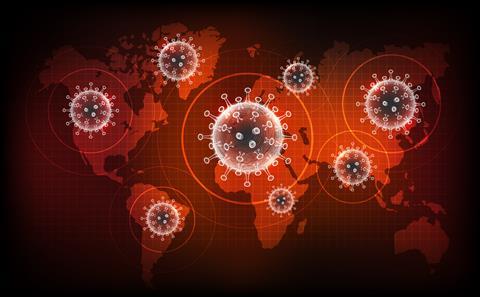It is not just international health crises where preparedness plays a significant role in the severity and impact of an event
While it may be too early to fully learn the lessons of the coronavirus pandemic, supply chain disruption was evident from the beginning of the crisis. Businesses were taken by surprise, and many became acutely aware of vulnerabilities that they had not previously known existed.
Indeed, the lack of pandemic preparedness was a critical factor in the severity of disruption faced by organisations of all sizes, says Cyril Darribere, Manager Risk Engineering Services Americas at Swiss Re Corporate Solutions.
He explains: “With SMEs and middle market customers I believe we’re going to see high frequency, low severity claims. However, if we look at large corporate customers, we’re going to see low frequency but more importantly high severity claims.
“The common features between SMEs and Fortune 500s clients, is that the extent of the pandemic was not fully embedded into their business continuity plan – if they had one. Companies weren’t really prepared because it’s a unique situation – we haven’t had a pandemic for several generations.”

The problem with surprises
It is not just international health crises where preparedness plays a significant role in the severity and impact of an event. Darribere points to natural catastrophes as good examples where the unforeseen hazards can be significantly more disruptive than those that are expected.
For instance, most people would put hurricanes near the top of the list of concerns when it comes to North American weather events. But Darribere says that their increasing frequency means that businesses are prepared and have risk mitigation or transfer solutions in place.
He says: “The market should be somehow less concerned by recurring natural hazards events. However, we must watch areas with increasing natural disasters such as the west coast wildfire.”
“Some customers might also experience surprises such as a tornado in an area where we do not expect tornados or flash floods in unexpected locations – this is a concern for me. For instance, the hurricane path has been changing over the years – look at what happened in Nicaragua where within two weeks they had to cope with two category 4 hurricanes. And unfortunately, homeowners and businesses might not be insured to the same extent as US premises.”
“The North American market was not fully prepared for supply chain disruption emerging out of natural disasters such as the 2011 Thailand floods and the 2016 Fukushima earthquake. It’s the surprise effect, the worst-case scenario that only few people thought could ever .”
The changing nature of supply
The COVID-19 pandemic alongside significant natural catastrophes both in the US and abroad have exposed the risks that globalised production processes can face. As a result, many businesses may be looking at new ways of introducing efficiencies via on-sourcing and near-sourcing.
According to the Swiss Re Institute’s latest sigma report - De-risking global supply chains: rebalancing to strengthen resilience - manufacturers with global operations are likely to further relocate and reshore their production sites. It said that the pharmaceutical, medical and semiconductor sectors in particular were examining new ways of operating.
However, Darribere cautions that such processes, as well as a reliance on just-in-time delivery and lean manufacturing, can introduce new risks for organisations.
He explains: “Time-to-market has drastically reduced, so I believe that policy holders are taking more calculated supply chain risks. Some might possibly look for quicker options involving a single supplier rather than having two or three suppliers, reducing complexity but adding vulnerability. Cyber is also on our watch for larger supply chain claims, especially in target occupancies such as pharmaceutical industry.”
“For me the biggest challenges relate to customers that have limited risk management experience, little awareness of the exposure and that have never experienced disruption.”
On the path to better awareness
Darribere argues that to help businesses manage the new and emerging supply chain threats, insurers must play a greater role in raising awareness. However, this is far from straightforward due to the fact that many organisations are hesitant to share data and information about their supply chain exposures with insurers. He concludes: “My vision is to offer what I call a “fully pledged supply chain modelling toolkit”. This is where we look at a customer’s supply chain, create a model, identify exposures but also help them to develop mitigation opportunities.
“Our role would be to operate as a consultant. We would be raising the awareness of supply chain issues through publications and, at the same time, offering Business Continuity Plan templates for companies without a risk management entity.”
In conclusion, these are Darribere’s four core steps to building business continuity:
1. A Business Impact Analysis to determine the potential effects resulting from the interruption of time sensitive or critical processes
2. Completing a risk assessment from a quantitative and qualitative perspective
3. Reviewing mitigation options to prevent an event from occurring or to reduce the severity of an event
4. Developing a tailored disaster recovery plan preventing or minimising business interruption to critical operations taking into consideration make-up capabilities between facilities, other manufacturers, or suppliers








No comments yet